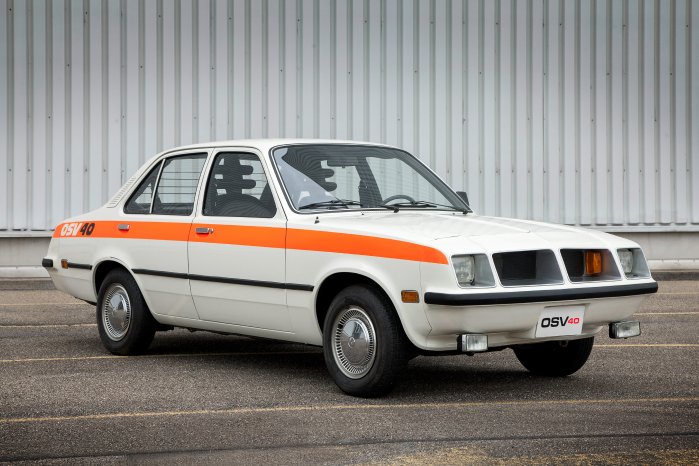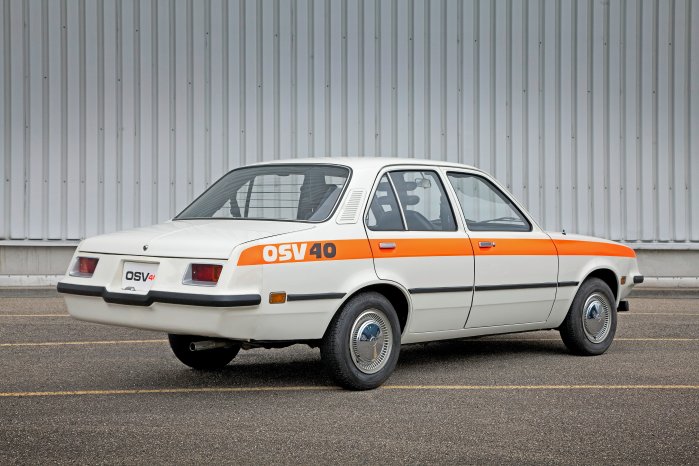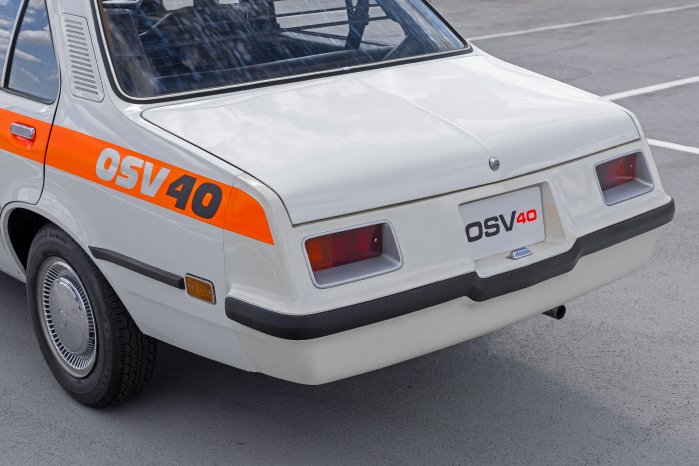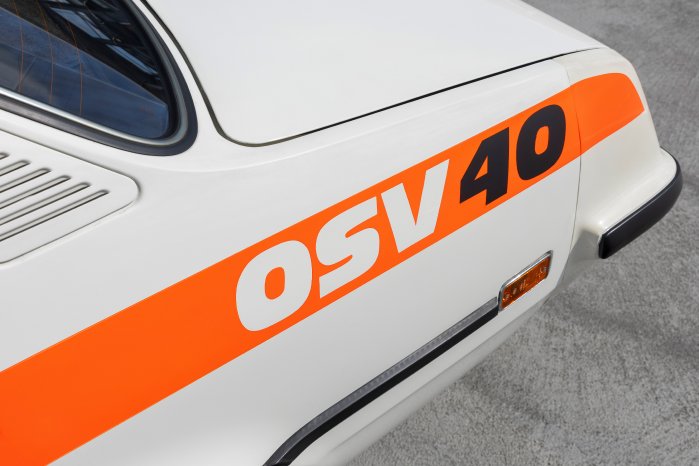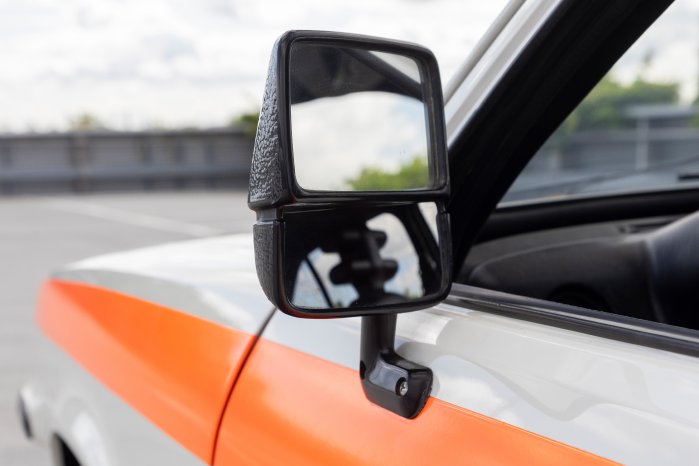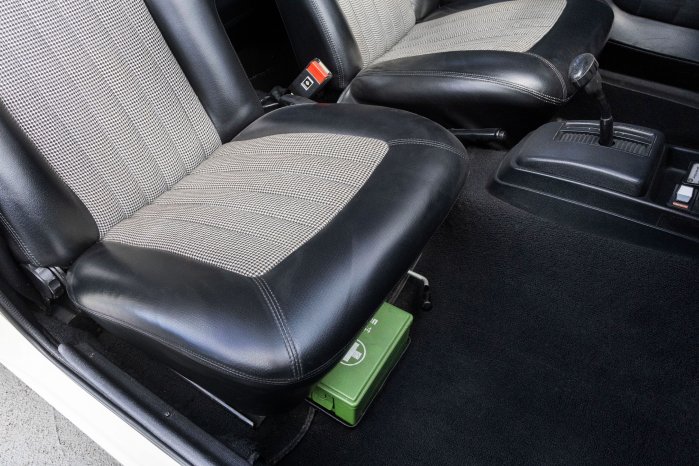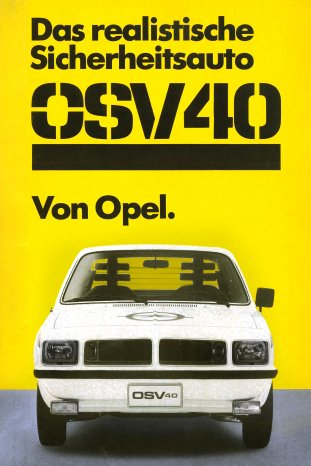- OSV 40: Opel Safety Vehicle masters impact speeds of up to 40 mph (65 km/h)
- Forerunner of production models: Visionary safety study based on the Opel Kadett C
- Compact class safety today: Current Astra with state-of-the-art assistance systems
OSV 40: Frontal impact up to 40 mph no problem for compact car
50 years ago, the Rüsselsheim-based brand presented its idea of a safe compact car at the International Technical Conference on the Enhanced Safety of Vehicles in London, UK. Based on the Kadett C, which had been introduced the year before, the engineers had further developed their visions on the subject of safety. The name OSV stands for Opel Safety Vehicle and the number 40 for the frontal impact speed in miles per hour (around 65 km/h) for which the OSV 40 was designed. Despite the additional safety equipment, the vehicle weight was to remain under 1,000 kilogrammes. With the experimental vehicle, which ultimately weighed 960 kg, the Opel engineers showed that even then, optimum passive safety could be achieved not only with large and heavy vehicles, but also with compact cars.
The OSV 40 met all the objectives during the subsequent crash tests: All four doors could still be opened without the help of tools after a frontal impact with a solid obstacle at 65 km/h. The front section of the car absorbed the energy so well that it was compressed by 50 cm. The OSV 40 was equally impressive during a frontal collision with a pylon at 50 km/h, a rear impact, a side impact with a post and during the rollover test at 48 km/h.
Bumpers with polyurethane foam: protection against impacts and deformation
The engineers came up with several ideas to achieve these exemplary results. The Kadett C provided the ideal basis for this with features such as shock-absorbing safety steering, crumple zones at the front and rear and the safety cell in the passenger compartment.
In comparison to contemporary sheet metal bumpers, the OSV 40's voluminous bumpers are particularly noticeable. The OSV 40 bumpers were filled with polyurethane foam which gave them their absorbing capacity. Foam-filled side members that break in a controlled way at impact speeds above eight kilometres per hour were used at the front. The foam structure absorbed enough energy that frontal impacts below this speed only resulted in a small deformation – thus the predecessor of the “self-healing” bumper was created. The engineers also filled the cavities of the sills and doors with polyurethane foam to create increased safety reserves for a side impact. Reinforced roof beams and the roof-mounted front seatbacks increased the stability of the passenger compartment (the seats could still be adjusted). Furthermore, the windshield made from laminated glass was glued directly to the bodywork – also with the goal of increasing body stiffness in mind.
Safety with a vision: passenger compartment and cockpit of the OSV 40
Inside the car, all surfaces with which the passengers could come into contact in case of an accident were cushioned with a two-centimetre layer of polyurethane foam. The steering was fitted with an additional collapsible element in the lower steering column sector, to better absorb the energy in case of an impact.
Safety also came first in the cockpit of the OSV 40. The central warning system made by Hella controlled 11 functions and showed possible errors by the associated warning lamps lighting up. Four additional lights behind the rear window signaled emergency braking and doubled as hazard lights. Due to their high positioning, they were easy to see for following road users. Innovative headlights with headlight range adjustment were used in the direction of travel to avoid dazzling oncoming traffic – an early precursor to today's adaptive Intelli-Lux LED® lighting technology from Opel. A split rear view mirror enabled a perfect view with the lower part reducing the blind spot to a minimum.
The front seats were widened to create a continuous partition to the rear compartment. The side supports, especially in the shoulder area, prevented the driver and passenger colliding in case of a side impact. The minimalistic head rests of the front seats ensured that the driver had a good view to the rear. For rear passengers, a shutter type headrest system was developed. In the event of a rear-end collision, the belts of the shutter supported the passengers' heads over a large area; visibility to the rear still remained good. The four seats of OSV 40 all had three-point belts – the ones in the front even already had an automatic seat belt tensioner system.
Pioneer of modern vehicle safety: From OSV 40 to current Astra
The influence of the OSV 40 was immense; the findings from the development and testing of the vehicle were soon incorporated directly into the production of new models. At the same time, the experimental vehicle contributed to a slowly changing public awareness. Until then, issues such as vehicle safety and accident prevention were hardly present in people's minds, but today car buyers increasingly take passive and active safety systems into account when choosing their model. The OSV 40 became a pioneer of modern vehicle safety as early as the mid-1970s – especially in the compact class.
Opel also underlines the importance it attaches to state-of-the-art assistance systems with its newest generation of Astra and Astra Sports Tourer. The extensive standard equipment of the compact class bestsellers includes:
- Forward collision indication with automatic emergency braking and pedestrian detection
- Lane departure warning
- Speed sign detection
- Drowsiness detection
- Cruise control with intelligent speed limiter
- Parking pilot for front and rear
- and, depending on the equipment variant, traffic sign assistant, automatic speed assist with stop function and the 360-degree Intelli-Vision camera.

